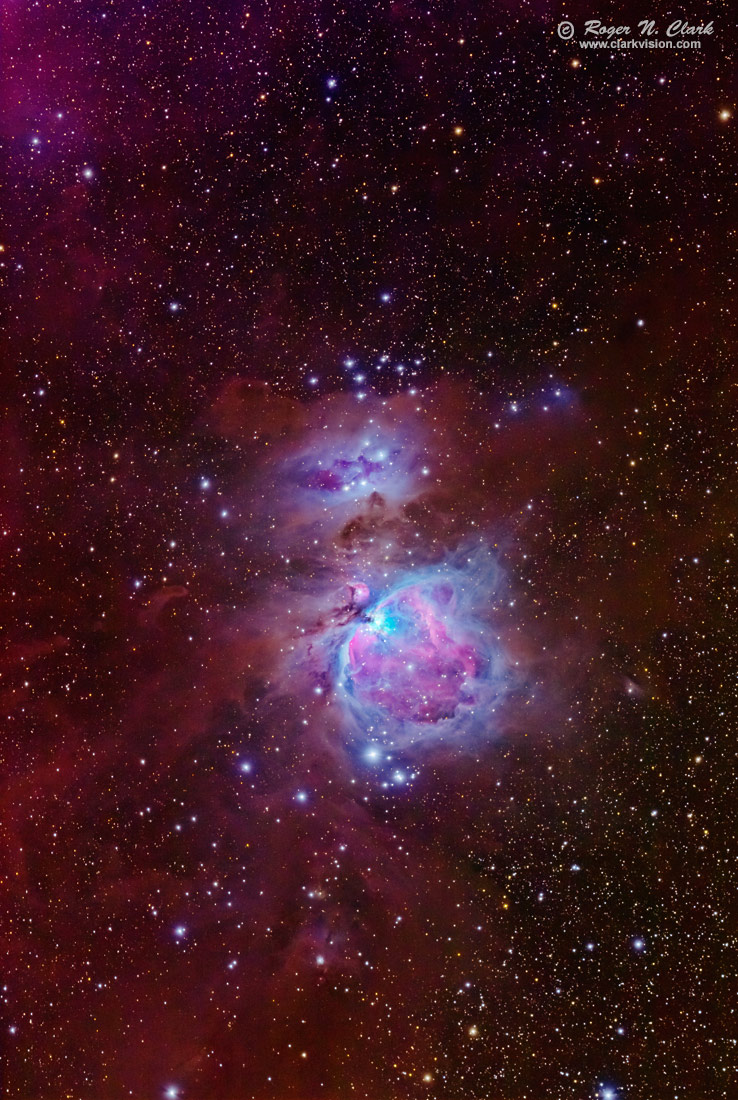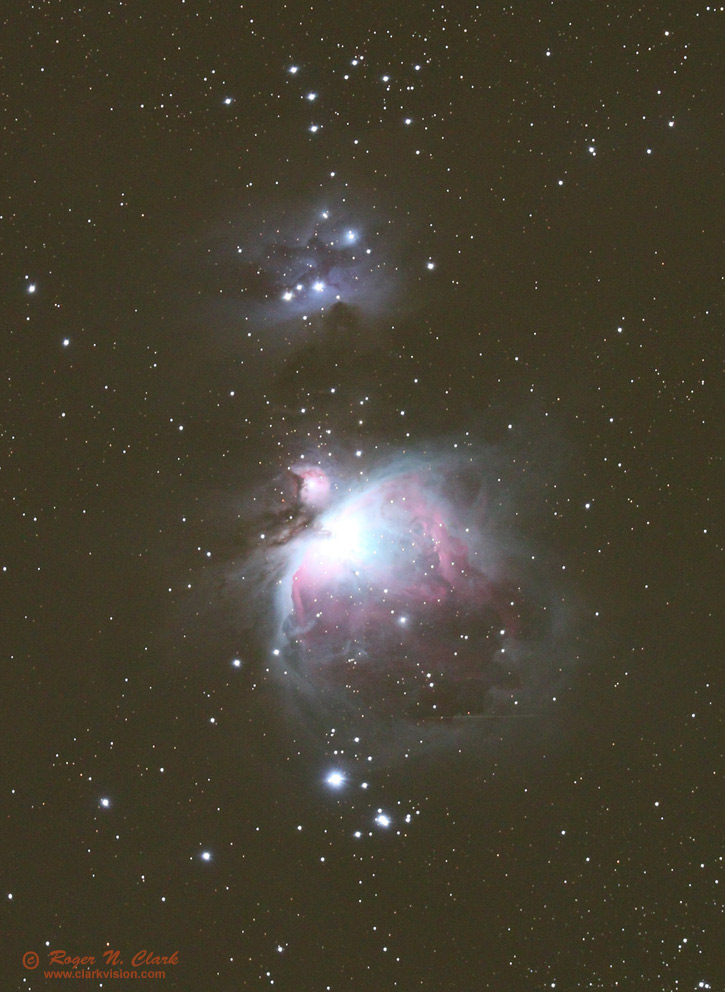| Home | Galleries | Articles | Reviews | Best Gear | New | About | Contact | Gallery Index | Previous |
Next |

| Home | Galleries | Articles | Reviews | Best Gear | New | About | Contact | Gallery Index | Previous |
Next |

The three stars that make up the sword of Orion are surrounded by beautiful nebulosity that can also be seen in small telescopes. In the center is Messier 42 and M43. Large amateur telescopes will also show the nebula's blue and pink colors in the brighter parts. This is one of the top showpieces in the sky.
The pink glow to the upper left is glow from an emission nebula that also contains the Horsehead nebula.
Technical. Canon 7D Mark II 20-megapixel digital camera and 300 mm f/2.8 L IS II at f/2.8. Twenty seven 61-second exposures at ISO 1600 were added (27.5 minutes total exposure) for the main image, then for the brighter core of the nebula, 4 32-second, 4 10-second, 8 4-second, and 6 2-second exposures. The short exposures were made into a high dynamic range image so that the core of the nebula was not overexposed. Total exposure time, including the core: 31 minutes. No dark frame subtraction, no flat fields. Tracking with an astrotrac. The outer orange nebulosity is very faint, so this image demonstrates that the 7D Mark II is an amazing low light camera for it to record so much detail in this short exposure. Full size image is at 2.8 arc-seconds per pixel, and the image here is 5 times less (14 arc-seconds per pixel).
The Exposure Factors, CEF, CEFA are measures of the relative amounts of light received from a subject. It can be used to fairly compare wildly different lens/telescope apertures and exposure times. For this image:
Daylight color balance. This is a stock camera with very close spectral response similar to the human eye. Astrophotographers often modify cameras for increased sensitivity to Hydrogen-alpha emission (red). The pink and light blue colors are the close to what I have seen visually through large telescopes though a little more pastel. Hydrogen emission nebulae actually appear pink due to H-alpha (red), H-beta (blue) and emission from other atoms, like oxygen and sulfur. Modified cameras over emphasize H-alpha, making hydrogen emission nebulae come out red in photos. Unmodified cameras do a better job at color separation of the various processes that occur in the deep sky. Modified cameras tend to show mostly red in areas like that in this image, making it too difficult to tell the difference between dust and hydrogen emission nebulae. For more information on this topic, see: The Color of Nebulae and Interstellar Dust in the Night Sky

To learn how to obtain stunning images like this, please visit my Extensive Articles on Photography .
See my review of the Canon 7D Mark II and why it is so good for astrophotography: Canon 7D Mark II sensor analysis.
Keywords to this image = astrophoto-1 Messier nebula low-light digital_astro canon_7d2
Image ID: orion.nebula.m42.c11.21.2014.0J6A1631-57-t2.h-1100vs.jpg
| Home | Galleries | Articles | Reviews | Best Gear | Science | New | About | Contact |
Last updated November 03, 2025